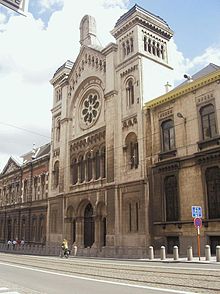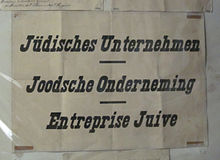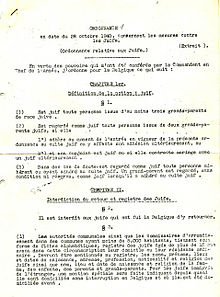
The Destruction of the European Jews is a 1961 book by historian Raul Hilberg. Hilberg revised his work in 1985, and it appeared in a new three-volume edition. It is largely held to be the first comprehensive historical study of the Holocaust. According to Holocaust historian, Michael R. Marrus, until the book appeared, little information about the genocide of the Jews by Nazi Germany had "reached the wider public" in both the West and the East, and even in pertinent scholarly studies it was "scarcely mentioned or only mentioned in passing as one more atrocity in a particularly cruel war".
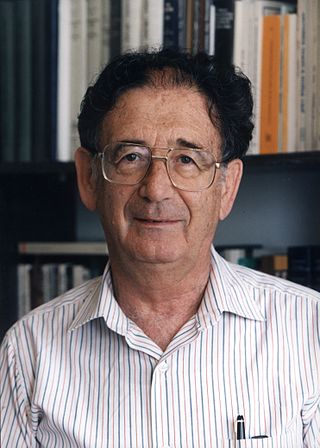
Yehuda Bauer is a Czech-born Israeli historian and scholar of the Holocaust. He is a professor of Holocaust Studies at the Avraham Harman Institute of Contemporary Jewry at the Hebrew University of Jerusalem.

On 19 April 1943, members of the Belgian Resistance stopped a Holocaust train and freed a number of Jews who were being transported to Auschwitz concentration camp from Mechelen transit camp in Belgium, on the twentieth convoy from the camp. In the aftermath of the attack, a number of others were able to jump from the train too. In all, 233 people managed to escape, of whom 118 ultimately survived. The remainder were either killed during the escape or were recaptured soon afterwards. The attack was unusual as an attempt by the resistance to free Jewish deportees and marks the only mass breakout by deportees on a Holocaust train.

Jewish resistance under Nazi rule took various forms of organized underground activities conducted against German occupation regimes in Europe by Jews during World War II. According to historian Yehuda Bauer, Jewish resistance was defined as actions that were taken against all laws and actions acted by Germans. The term is particularly connected with the Holocaust and includes a multitude of different social responses by those oppressed, as well as both passive and armed resistance conducted by Jews themselves.
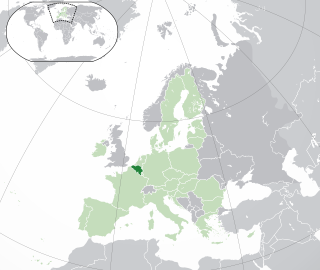
The history of the Jews in Belgium goes back to the 1st century CE until today. The Jewish community numbered 66,000 on the eve of the Second World War but after the war and The Holocaust, now is less than half that number.

Holocaust trains were railway transports run by the Deutsche Reichsbahn national railway system under the control of Nazi Germany and its allies, for the purpose of forcible deportation of the Jews, as well as other victims of the Holocaust, to the Nazi concentration, forced labour, and extermination camps.

Robert Herman Alfred de Foy CBE was a Belgian magistrate, and head of the Belgian State Security Service, during the occupation of Belgium by the Nazis. This period of his life has led to considerable historical debate around de Foy's legacy, but in the post-war period he returned to his pre-war position, was decorated Grand Officer of the Order of Leopold II, and recognised as "Righteous Among the Nations" by the state of Israel.

Andrée Geulen-Herscovici was a Belgian teacher and member of the resistance during the German occupation of Belgium during World War II. After becoming aware of the persecution of Belgian Jews through her employment, she became involved in the Committee for the Defence of Jews in 1943 and actively assisted with the organisation and protection of "hidden children" amid the Holocaust in Belgium. In the aftermath of the war, she was recognised as Righteous among the Nations by the Israeli institute Yad Vashem and received several other honours in Belgium and Israel.
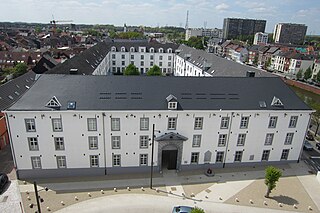
The Mechelen transit camp, officially SS-Sammellager Mecheln in German, also known as the Dossin barracks, was a detention and deportation camp established in a former army barracks at Mechelen in German-occupied Belgium. It served as a point to gather Belgian Jews and Romani ahead of their deportation to concentration and extermination camps in Eastern Europe during the Holocaust.

Abraham Asscher was a Dutch Jewish businessman from Amsterdam, a politician, and a leader of his community who attained notoriety for his role during the German occupation of the Netherlands (1940–1945).

The Holocaust in France was the persecution, deportation, and annihilation of Jews between 1940 and 1944 in occupied France, metropolitan Vichy France, and in Vichy-controlled French North Africa, during World War II. The persecution began in 1940, and culminated in deportations of Jews from France to Nazi concentration camps in Nazi Germany and Nazi-occupied Poland. The deportation started in 1942 and lasted until July 1944. Of the 340,000 Jews living in metropolitan/continental France in 1940, more than 75,000 were deported to death camps, where about 72,500 were murdered.

The German occupation of Belgium during World War II began on 28 May 1940, when the Belgian army surrendered to German forces, and lasted until Belgium's liberation by the Western Allies between September 1944 and February 1945. It was the second time in less than thirty years that Germany had occupied Belgium.
Yiddisher Arbeter Sport Klub was a Jewish sports organization in Antwerp, Belgium. It was founded in 1936. YASK was linked to the Communist Party of Belgium. A product of the Popular Front era, YASK was set up as an open sports organization for the Jewish population at large. The club emphasized anti-fascism, whilst maintaining a neutral stand on Zionism.

Jeanne Daman (1918-1986) is one of the Righteous Among the Nations.

This article describes all Stolpersteine that have been placed in Charleroi, Belgium. Stolpersteine is the German word for stumbling blocks placed all over Europe by German artist Gunter Demnig. They remember the fates of people who were murdered, deported, exiled or driven to suicide by the Nazis.

Maxime Steinberg (1936–2010) was a Belgian historian and teacher who wrote extensively on the Holocaust in Belgium. He has been described as "Belgium's principal Holocaust historian" and was best known for his three-part history of the subject entitled L'Étoile et le Fusil, published in 1983–87.

Henri Kichka was a Belgian writer and Holocaust survivor who was one of the leading figures in Holocaust education in Belgium. Kichka was the only member of his family to have survived the deportation of Belgian Jews to camps in Central and Eastern Europe. He began speaking on the importance of the memory of those who perished at the hands of the Nazis in the 1980s and spoke widely on his experiences to school audience. In 2005, published his autobiography, Une adolescence perdue dans la nuit des camps with a preface by the French historian Serge Klarsfeld. He is the father of cartoonist Michel Kichka.

A roundup is a police operation of interpellation and arrest of people taken at random from a public place, or targeting a particular population by ethnicity, appearance, or other perceived membership in a targeted group. To ensure operational success, organizers rely on the element of surprise in order to reduce the risk of evasion as much as possible. When the operation involves large numbers of individuals not targeted for any perceived group membership, it may be called a mass arrest.
Dan Michman is a Jewish historian. He is the head of the International Institute for Holocaust Research at Yad Vashem in Jerusalem and incumbent of the John Najmann Chair of Holocaust studies.

